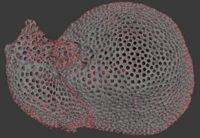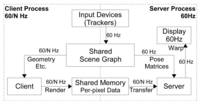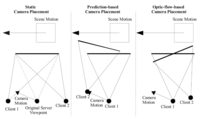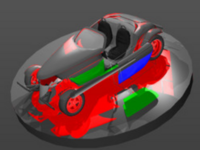Overview
In this section we propose several techniques for latency reduction in real-time rendering in the context of virtual reality applications.
Modern virtual reality simulations require a constant high-frame rate from the rendering engine. They may also require very low latency and stereo images.more
We describe the design, implementation and evaluation of a client-server depth-image warping architecture that updates and displays the scene graph at the refresh rate of the display.more
We describe the design, implementation and evaluation of a client-server depth-image warping architecture that updates and displays the scene graph at the refresh rate of the display.more
We describe an architecture that provides a programmable display layer (PDL) in order to generate updated display frames.more
We introduce an architecture for smooth motion in virtual environments.more
This paper presents advanced multi-frame rate rendering techniques, which remove limitations of the original approach and reduce artifacts.more
We introduce a new concept for improved interaction with complex scenes: multi-frame rate rendering and display. Multi-frame rate rendering produces a multi-frame rate display by optically or digitally compositing the results of asynchronously running image generators. Interactive parts of a scene are rendered at the highest possible frame rates while the rest of the scene is rendered at regular frame rates.more
Multi-frame rate rendering is naturally implemented on a graphics cluster. With the recent availability of multiple graphics cards in standalone systems multi-frame rate rendering can also be implemented on a single PC where memory bandwidth is much higher compared to off-the-shelf networking technology.more
We have developed an approach for improving the performance of object manipulation in ray tracing systems.more









